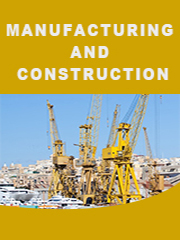Report overview
Reflow Oven is a machine used primarily for reflow soldering of surface mount electronic components to printed circuit boards (PCB). Reflow soldering is the most common method of attaching surface mount components to a circuit board.
This report aims to provide a comprehensive presentation of the global market for Reflow Oven for PCB and Semiconductor, with both quantitative and qualitative analysis, to help readers develop business/growth strategies, assess the market competitive situation, analyze their position in the current marketplace, and make informed business decisions regarding Reflow Oven for PCB and Semiconductor. This report contains market size and forecasts of Reflow Oven for PCB and Semiconductor in global, including the following market information:
Global Reflow Oven for PCB and Semiconductor Market Revenue, 2018-2023, 2024-2029, ($ millions)
Global Reflow Oven for PCB and Semiconductor Market Sales, 2018-2023, 2024-2029, (Units)
Global top five Reflow Oven for PCB and Semiconductor companies in 2022 (%)
The global Reflow Oven for PCB and Semiconductor market was valued at US$ 368.3 million in 2022 and is projected to reach US$ 482.8 million by 2029, at a CAGR of 3.9% during the forecast period. The influence of COVID-19 and the Russia-Ukraine War were considered while estimating market sizes.
Global key reflow oven for PCB and semiconductor players include Shenzhen JT Automation, Folungwin and Heller Industries etc. The top 3 companies hold a share about 30%. Asia-Pacific is the largest market with a share about 78% followed by North America and Europe.
In terms of product, convection product is the largest segment with a share about 83%. And in terms of applications, the largest application is telecommunication with a share about 36%.
We surveyed the Reflow Oven for PCB and Semiconductor manufacturers, suppliers, distributors and industry experts on this industry, involving the sales, revenue, demand, price change, product type, recent development and plan, industry trends, drivers, challenges, obstacles, and potential risks.
Total Market by Segment:
Global Reflow Oven for PCB and Semiconductor Market, by Type, 2018-2023, 2024-2029 ($ Millions) & (Units)
Global Reflow Oven for PCB and Semiconductor Market Segment Percentages, by Type, 2022 (%)
Convection Reflow Oven
Vapour Phase Reflow Oven
Global Reflow Oven for PCB and Semiconductor Market, by Application, 2018-2023, 2024-2029 ($ Millions) & (Units)
Global Reflow Oven for PCB and Semiconductor Market Segment Percentages, by Application, 2022 (%)
Telecommunication
Consumer Electronics
Automotive
Others
Global Reflow Oven for PCB and Semiconductor Market, By Region and Country, 2018-2023, 2024-2029 ($ Millions) & (Units)
Global Reflow Oven for PCB and Semiconductor Market Segment Percentages, By Region and Country, 2022 (%)
North America
US
Canada
Mexico
Europe
Germany
France
U.K.
Italy
Russia
Nordic Countries
Benelux
Rest of Europe
Asia
China
Japan
South Korea
Southeast Asia
India
Rest of Asia
South America
Brazil
Argentina
Rest of South America
Middle East & Africa
Turkey
Israel
Saudi Arabia
UAE
Rest of Middle East & Africa
Competitor Analysis
The report also provides analysis of leading market participants including:
Key companies Reflow Oven for PCB and Semiconductor revenues in global market, 2018-2023 (Estimated), ($ millions)
Key companies Reflow Oven for PCB and Semiconductor revenues share in global market, 2022 (%)
Key companies Reflow Oven for PCB and Semiconductor sales in global market, 2018-2023 (Estimated), (Units)
Key companies Reflow Oven for PCB and Semiconductor sales share in global market, 2022 (%)
Further, the report presents profiles of competitors in the market, key players include:
Rehm Thermal Systems
Kurtz Ersa
BTU International
Heller Industries
Shenzhen JT Automation
TAMURA Corporation
ITW EAE
SMT Wertheim
Senju Metal Industry Co., Ltd
Folungwin
JUKI
SEHO Systems GmbH
Suneast
ETA
Papaw
EIGHTECH TECTRON
Outline of Major Chapters:
Chapter 1: Introduces the definition of Reflow Oven for PCB and Semiconductor, market overview.
Chapter 2: Global Reflow Oven for PCB and Semiconductor market size in revenue and volume.
Chapter 3: Detailed analysis of Reflow Oven for PCB and Semiconductor manufacturers competitive landscape, price, sales and revenue market share, latest development plan, merger, and acquisition information, etc.
Chapter 4: Provides the analysis of various market segments by type, covering the market size and development potential of each market segment, to help readers find the blue ocean market in different market segments.
Chapter 5: Provides the analysis of various market segments by application, covering the market size and development potential of each market segment, to help readers find the blue ocean market in different downstream markets.
Chapter 6: Sales of Reflow Oven for PCB and Semiconductor in regional level and country level. It provides a quantitative analysis of the market size and development potential of each region and its main countries and introduces the market development, future development prospects, market space of each country in the world.
Chapter 7: Provides profiles of key players, introducing the basic situation of the main companies in the market in detail, including product sales, revenue, price, gross margin, product introduction, recent development, etc.
Chapter 8: Global Reflow Oven for PCB and Semiconductor capacity by region & country.
Chapter 9: Introduces the market dynamics, latest developments of the market, the driving factors and restrictive factors of the market, the challenges and risks faced by manufacturers in the industry, and the analysis of relevant policies in the industry.
Chapter 10: Analysis of industrial chain, including the upstream and downstream of the industry.
Chapter 11: The main points and conclusions of the report.
